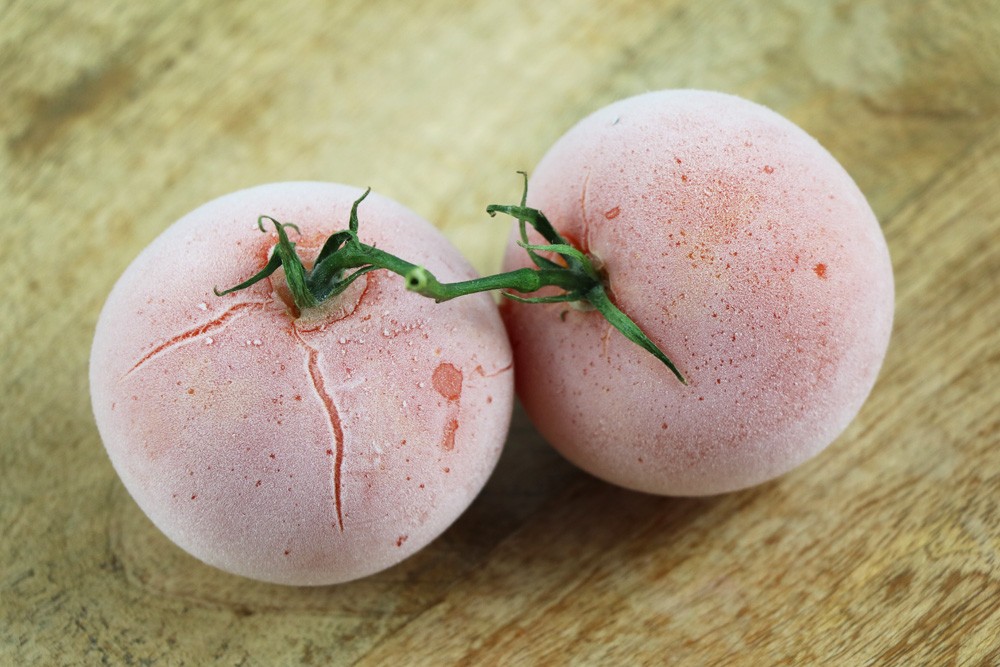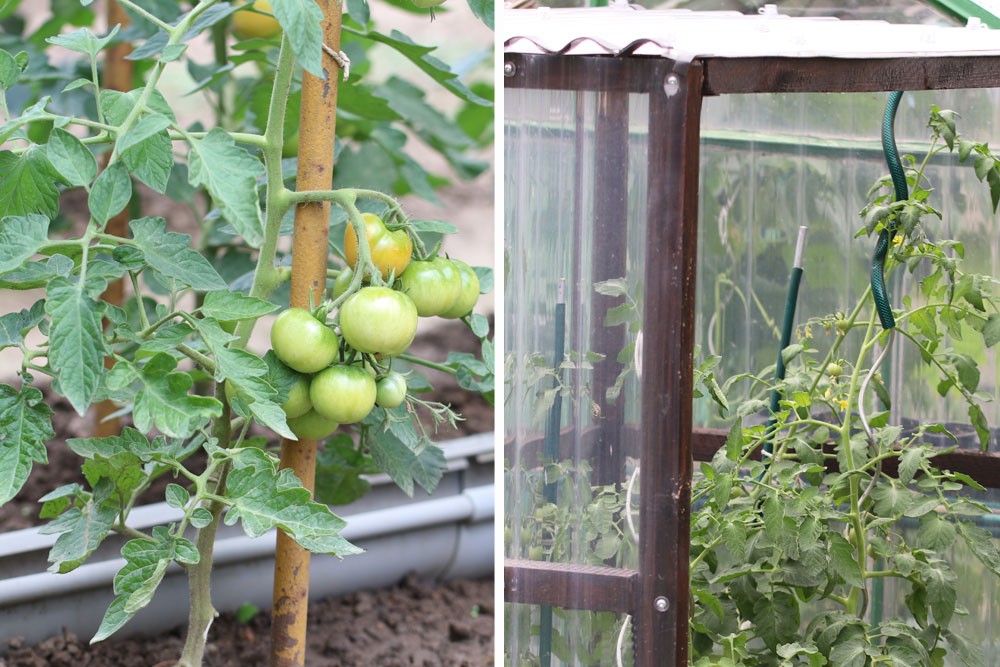Generally, the tomato plants should be used only after the ice. This is due to the fact that the probability of frost from the end of May is relatively low. Nevertheless, it can always happen that, especially at night, the temperature drops below zero degrees. Tomatoes, which are cultivated in a tub on the balcony, can be easily brought inside when it is cold. For outdoor tomatoes, as well as tomato plants, which are grown in the greenhouse, special precautions are needed to protect them from frost.
Contents
Protect outdoor tomato plants from frost
For outdoor tomatoes, there are several ways to protect them from the cold, especially at night. As a rule, the protective structures work the same and differ largely by their material. Which option the amateur gardener chooses ultimately depends on his preference, as well as on the number of tomato plants.

Tomato canopy
If you have only single tomato plants in your garden, a tomato hood is the best choice. These are relatively inexpensive to purchase and also reusable. The handling of the tomato hood is on top of it extremely simple: In case of frost, the hood is carefully put over the plant and then attached to a rod. When buying a tomato hood, it is important to consider the following:
- the film should be UV-stabilized
- ideally, it is stretchable
- this allows it to “grow” with the plant
- Air holes are optimal
- because they allow better ventilation
Garden fleece
Garden fleeces can be used for numerous purposes, including acting as frost protection for tomatoes. The garden fleeces are available in various sizes and designs. There are already cut models, as well as rolls, which can be optimized as needed. Garden fleeces are characterized by the following features:
- they are breathable
- therefore they do not need air holes
- the fleece should be permeable to light
- and permeable to moisture
The handling of garden fleeces is similar to that of tomato covers: the fleece is also carefully put over the plant and loosely tied underneath.
Foil tunnel
A foil tunnel is a type of erectable greenhouse. The foil tunnels are relatively cheap to buy and are available in different sizes. As a rule, they are about 80 cm wide as well as about 50 cm high and have a length of one to several meters. The plant tunnels offer numerous advantages:
- with the help of the foil the soil warms up faster
- retains heat longer
- in addition, the foil provides protection from rain and wind
- and it creates a small microclimate inside the plant tunnel
- because the film has a positive influence on the exchange of moisture
- this favors the growth of tomatoes
The construction of the foil tunnels is quick and easy, especially since no additional equipment is needed for it.
- put the support elements (sticks) into the ground
- at a distance of about 50 cm
- ideally, additionally fasten the foil at the highest point
- a robust cord is suitable for this purpose
- this gives the foil additional stability
If you are a skilled craftsman, you can build a foil tunnel yourself in just a few steps. The advantage of this cheap variant is that the size of the plant tunnel can be perfectly adapted to the existing bed and the tomatoes. For the self-construction the following
- required utensils
- flexible plastic rods or spring steel rods
- these should have a length of about 3 m
- and a diameter of 5-8 mm
- 2 wooden stakes and a sturdy cord
- tear-proof UV-impermeable PE foil
- with a width of about 2.5 m
- the length is equal to the length of the bed + 3 m
- the film should not be folded, but rolled
- ideally it is perforated
- ventilates the plants better
The construction is also relatively simple and requires little time. First, the rods are inserted into the ground at equal intervals about 30 cm deep, with the first as well as the last rod slightly deeper.
Instructions
- bend the sticks in a semi-circle shape
- and stick them into the ground on the other side of the bed just as deep
- at the beginning and at the end of the bed drive a wooden stake into the ground
- stretch the string between the wooden stakes
- then stretch the foil over the construction
- the foil should protrude about 1 m on both sides
- tie the ends together at the wooden stakes
- if necessary, additionally weigh down with stones
Protect tomatoes from cold in the greenhouse
Tomato plants can be protected from frost in the greenhouse relatively easily with a frost monitor. This inexpensive greenhouse heater is not only environmentally friendly, but also energy-saving, since only the required heat is ever generated. In addition, many models are equipped with a built-in timer. This makes it possible, especially at night, to protect the tomatoes from the cold without much effort. The frost monitor has a built-in thermostat and works as follows:

set the desired temperature for the greenhouse.
If the temperature falls below the preset temperature, the heater turns on
and heats the air to the preset temperature.
Gas frost monitor
The gas freeze monitor is operated with propane gas cylinders, but it can also be connected to the house gas connection. Since it does not require electricity, it is suitable for almost any greenhouse. When buying, depending on the size of the greenhouse, should pay attention to the correspondingly high heating power. The models have a power of 80 watts to 2000 watts. When using a gas frost heater, it is necessary to pay attention to the following:
- place on a fireproof base
- for example on concrete slabs or tiles
- reduces the risk of fire
- the greenhouse must be equipped with a thermal fuse
- as well as with an oxygen deficiency safety device.
Electric frost monitor
When heating with an electric frost monitor, make sure that the socket is suitable for damp areas. Small greenhouses can be easily powered by electric frost monitors with 500-800 watts of power. It is important that when using them, the air inlets and outlets are free. When buying an electronic heater, it is important to consider the following:
- Splash guard should be present
- ideally, an overheating protection is built in
- as well as a ventilation function
- this distributes warm air better
- Positioning the greenhouse heater
The ideal place is one from which the heat can be best distributed. It is important not to place the frost monitor too high. This is because the warm air rises to the top and there is a risk that low-growing tomatoes will not get enough heat.
Solar greenhouse heating
In this environmentally friendly heating method, photovoltaic elements are either built on the roof of the house or the solar elements are placed next to the greenhouse. In both variants, it is essential that the solar elements face south, as they store solar energy. Cultivation on the roof of the greenhouse is not recommended, because the elements would take away too much sunlight from the tomatoes.










